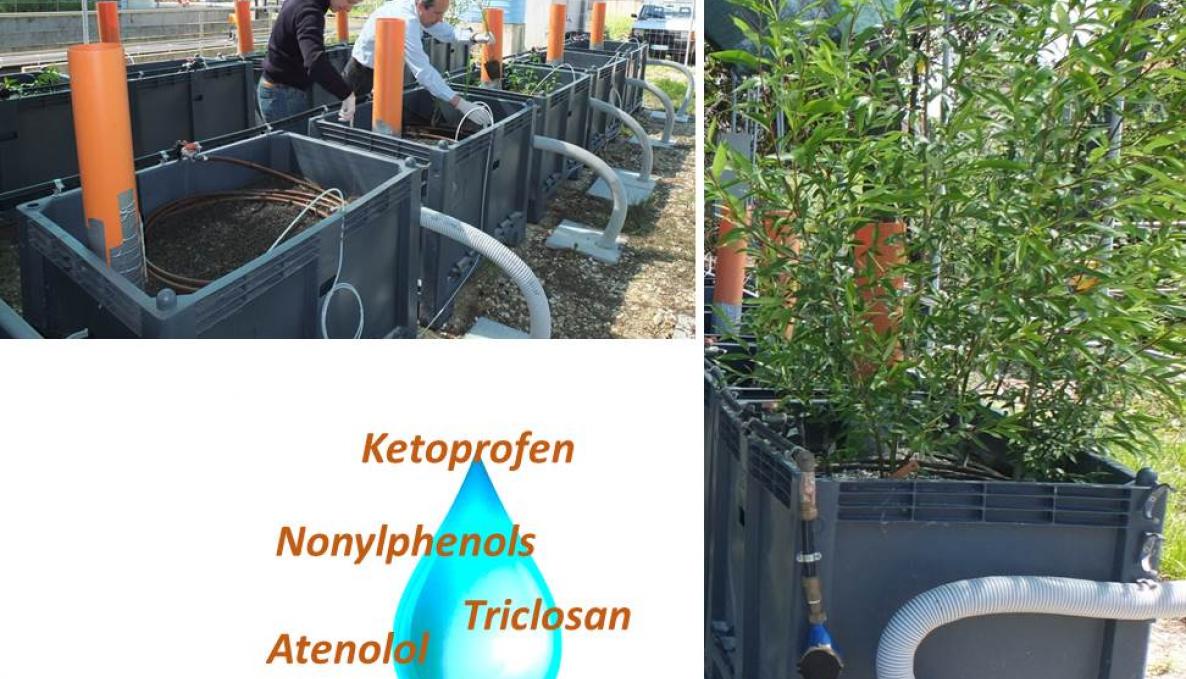Wastewater treatment: willows and reeds for phytoremediation of organic and pharmaceutical pollutants: A new study by researchers of the University of Pisa and Sant’Anna School

The study published in the international journal “Environmental Science and Pollution Research” assessed the ability to remove micro-pollutants from wastewater using herbaceous species (Phragmites australis L.) and trees (Salix matsudana Koidz.) in constructed wetland (CW) systems. Researchers of the Biology Department at the University of Pisa and Sant’Anna School Institute of Life Sciences demonstrated the phytoremediation potential of willows and reeds to remove contaminants: P. australisuptakes is able to remove 4-n-NP, diclofenac, and atenolol, while S. matsudana can translocate in the aerial part preferentially NP1EO, NP2EO, ketoprofene, and triclosan. The plant combination uptakes of micro-pollutants suggest a more effective way for absorption of xenobiotic compounds.
Researchers found that NPnEOs are only partially degraded in conventional wastewater treatment plants and the main problem related to these surfactants is the evidence that the conventional bacterial metabolic activity of the activated sludge is producing compounds more toxic and resistant to biological degradation. Together with NPnEOs and derivatives, pharmaceuticals and personal care products are considered active organic pollutants. As the legislation does not limit the human use of these compounds, new methods and technologies using herbaceous plants represent a good tool for a phytoremediation approach of these micro-pollutants in the environment.
“Our research focused on several pharmaceutical drugs, such as analgesics, β-blockers and anti-inflammatory, atenolol, diclofenac and ketoprofen, which are used to treat rheumatic diseases and suppress inflammation”, said Lorenzo Mariotti, junior researcher of the Agriculture Dept. at the University of Pisa.
“Multiple studies using different pharmaceuticals and different macrophyte communities have been carried out indicating that specific macrophytes could influence the removal efficiency. In fact, both willows and reeds P. australis and S. matsudana proved to be more efficient”, commented Simona Di Gregorio and Andrea Andreucci Biology Department at the University of Pisa.
“In this study, we demonstrated that the contribution of the microbial community in micro-pollutants removal is negligible, especially if compared to the possible uptake capacity of the different plant species. Therefore, organic contaminants and a combination of strategies capable of reducing the negative effects of pollution on human health need to be further explored”, commented Luca Sebastiani, director of Sant’Anna School Institute of Life Sciences.
Co-authors are Alessandra Francini, Lorenzo Mariotti, Simona Di Gregorio, Luca Sebastiani and Andrea Andreucci.
Click here to download the paper.



